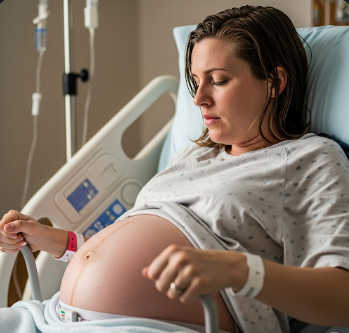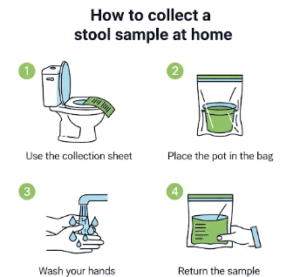Overview
Contractions refer to rhythmic tightening and relaxing of the uterine muscles, often experienced during pregnancy and labor. They play a crucial role in preparing the uterus for childbirth and facilitating the delivery of the baby. While mild contractions can occur throughout pregnancy (known as Braxton Hicks contractions), true labor contractions are more intense, regular, and progressive.
In South Korea, obstetrics and maternity hospitals provide advanced monitoring, evaluation, and management of uterine contractions, ensuring maternal and fetal safety during labor and throughout pregnancy.
Key Facts
Highlights:
➡️ Contractions are natural physiological events that prepare the uterus for childbirth.
➡️ They may begin as mild, irregular tightening (Braxton Hicks) and progress to strong, regular contractions in active labor.
➡️ Contractions can be associated with pain, pressure in the lower abdomen or back, and changes in the cervix.
➡️ Monitoring contractions is essential for assessing labor progression and fetal well-being.
➡️ South Korea provides advanced obstetric care, fetal monitoring, and labor support to manage contractions effectively.
What is Contractions?
Contractions are involuntary muscular movements of the uterus that occur throughout pregnancy but become significant during labor.
Key characteristics:
- Frequency: Early contractions may occur irregularly; labor contractions typically occur every 3–5 minutes.
- Duration: Can last 30–90 seconds depending on the stage of labor.
- Intensity: Ranges from mild (Braxton Hicks) to strong and painful (active labor).
- Associated Changes: Cervical dilation and effacement, descent of the baby into the birth canal.
Contractions are essential for the progression of labor but may also occur in response to uterine irritability or other medical conditions.
What Symptoms are Related to Contractions?
Symptoms accompanying contractions include:
- Lower abdominal or pelvic pressure
- Back pain or cramping
- Tightening of the uterus
- Pain radiating to thighs or lower back
- Bloody show or vaginal discharge in some cases
- Water breaking if membranes rupture
Highlights:
➡️ True labor contractions are regular, increasing in intensity and frequency.
➡️ Braxton Hicks contractions are irregular and less painful, often described as practice contractions.
➡️ Persistent or painful contractions before 37 weeks may indicate preterm labor and require urgent evaluation.
What Causes / Possible Causes of Contractions?
Highlights:
➡️ Labor Preparation: Uterine muscles contract to prepare the cervix for labor.
➡️ Braxton Hicks Contractions: Occur due to uterine irritation, dehydration, or fetal movement.
➡️ Preterm Labor: Contractions before 37 weeks may be triggered by infection, stress, uterine anomalies, or multiple pregnancies.
➡️ Induced Labor: Medications like oxytocin stimulate contractions to facilitate childbirth.
➡️ Postpartum Contractions: Occur after delivery to help the uterus shrink back to its normal size and control bleeding.
➡️ Mechanism: Contractions are driven by hormonal changes (oxytocin, prostaglandins) that stimulate uterine muscle fibers to contract and relax rhythmically.
When Should I See My Doctor?
Highlights:
➡️ If contractions are regular, painful, or increasing in frequency before 37 weeks, contact your obstetrician immediately.
➡️ If accompanied by vaginal bleeding, fluid leakage, or decreased fetal movement, urgent evaluation is required.
➡️ For first-time mothers, any uncertainty about contractions warrants professional guidance.
➡️ During active labor, hospital monitoring ensures maternal and fetal safety, including pain management and labor progression tracking.
➡️ Prompt consultation ensures early intervention for preterm labor, labor complications, or fetal distress.
Care and Treatment
Treatment focuses on monitoring contractions, managing pain, and ensuring safe labor progression:
Highlights:
➡️ Monitoring:
- Regular fetal heart rate monitoring
- Timing contractions for frequency, duration, and intensity
➡️ Pain Relief:
- Non-medical: Breathing exercises, massage, warm baths, position changes
- Medical: Epidural analgesia, nitrous oxide, or systemic analgesics
➡️ Hydration and Rest: Adequate fluid intake and comfortable positioning can reduce Braxton Hicks contractions.
➡️ Medications:
- Tocolytics to slow preterm contractions if necessary
- Oxytocin for labor induction under medical supervision
➡️ Lifestyle Measures: Stress reduction, gentle movement, and pelvic exercises may help manage mild contractions during pregnancy.
➡️ Follow-Up: Continuous evaluation ensures optimal timing for hospital admission and labor management.
Treatment Options in Korea
South Korea provides comprehensive obstetric care for managing contractions, including:
Highlights:
➡️ Maternity Hospitals and Clinics: Experienced obstetricians provide continuous labor monitoring and care.
➡️ Fetal and Maternal Monitoring: Electronic fetal monitoring, ultrasound, and regular maternal assessments.
➡️ Pain Management: Epidural, nitrous oxide, and advanced analgesic options.
➡️ Preterm Labor Management: Early detection and treatment using tocolytics and specialized care.
➡️ Multidisciplinary Care: Collaboration among obstetricians, neonatologists, and nurses for safe delivery.
➡️ Medical Tourism Support: Multilingual consultations, advanced labor monitoring, and postpartum care for international patients.













